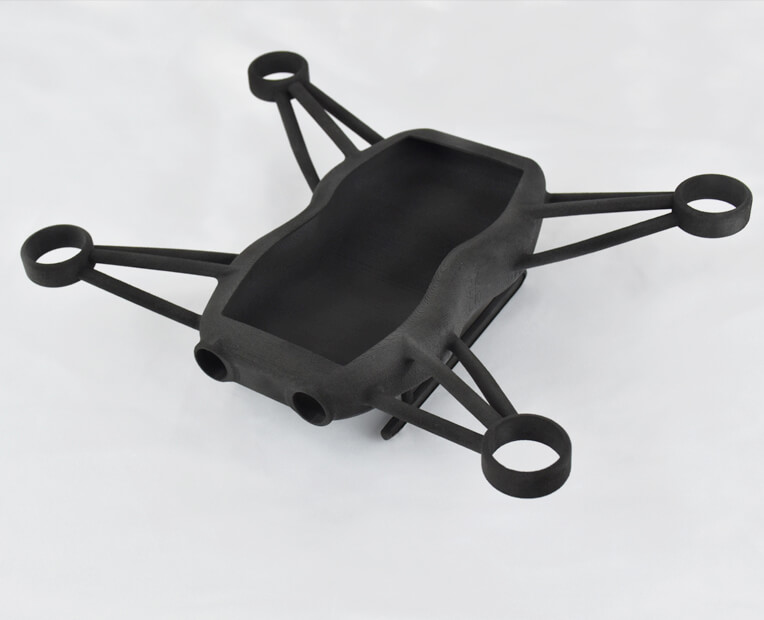Ultrasint® PA11 CF is printed using a Powder Bed Fusion technology called Selective Laser Sintering, or SLS. Nylon PA11 is a bio-derived powder material for advanced applications, this material is based on 100% renewable biomass sources: castor seed is extracted from castor plant to make oil. This oil is then converted into the monomer (11-aminoundecanoic acid), which is finally polymerized into Polyamide 11.

Ultrasint® PA11 CF is one of the strongest materials in the 3D printing industry, combining high ductility and impact performance as well as really high rigidity. It is offering a well-balanced mechanical property profile, maintaining high ductility and impact performance.
This 3D printing material is carbon-fiber-reinforced, providing advanced mechanical performance for your parts when strength and rigidity are needed. Ultrasint® PA11 CF offers exceptionally high rigidity for the highest performance requirements and lightweight designs. This lightweight is important to notice: this material allows 3D printing of lightweight designs by reducing wall thicknesses, thanks to its high rigidity.
Here are the main advantages of this material:
- High strength-to-weight ratio
This PA11 material offers an impressive impact resistance, making its use relevant for various demanding industries and applications, and can be a good option for drone manufacturing: producing the drone parts with Ultrasint® PA11 CF ensures solidity with a perfectly optimized weight!
With a Young’s modulus of 4500 MPa, Ultrasint® PA11 is a very rigid material thanks to its carbon-fiber reinforcement, which makes it a perfect option for applications where rigidity really matters. It is possible to 3D print Ultrasint® PA11 to manufacture metal replacement parts.

- Excellent impact resistance
The Charpy impact unnotched is 63 kJ/m2 which makes Ultrasint® PA11 CF the perfect choice for lightweight designs without compromising a part’s functionality. This can be interesting to manufacture some motorsport parts for example.
Benefit from our SLS 3D printing service. Do you want to try this impressively resistant 3D printing material for your next project? You can directly upload your 3D file on our website, or contact our team to get more information about this material or get any help for your project.


 Connect with Google
Connect with Google Connect with Facebook
Connect with Facebook

